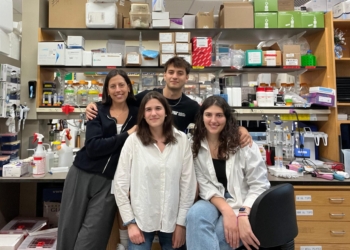The EACR’s ‘Highlights in Cancer Research’ is a regular summary of the most interesting and impactful recent papers in cancer research, curated by the Board of the European Association for Cancer Research (EACR).
The list below appears in no particular order, and the summary information has been provided by the authors unless otherwise indicated.
Use the dropdown menu or ‘Previous’ and ‘Next’ buttons to navigate the list.
7. Multiparameter imaging reveals clinically relevant cancer cell-stroma interaction dynamics in head and neck cancer
Punovuori, K. et al. Cell. 25: p7267-7284.e20. (2024).
doi: 10.1016/j.cell.2024.09.046.
 Summary of the findings
Summary of the findings
Cancer heterogeneity drives disease aggression and therapy resistance, but understanding its origins, mechanisms, and diagnostic potential remains challenging. Using an innovative strategy that combines high-resolution, high-throughput analyses of cell states, position and morphology (millions of cells with subcellular resolution) in clinical tumor biopsies, Punovuori et al established a quantitative image analyiss paradigm that revealed a highly aggressive disease subtype for human head and neck cancers that currently lack any clinical biomarkers. Partial epithelial-to-mesenchymal transition (pEMT) phenotypes have been identified in a number of tumor types, including HNSCC, and are associated with aggressive behavior and metastatic potential. This study reveals previously unreported subgroups of patients, with a particularly relevant poor survival patient group characterized by pEMT status of the tumor and a cancer associated fibroblast (CAF)-enriched fibrotic stroma. Further mechanistic studies using spatial transcriptomics on patient biopsies and patient-derived three-dimensional cancer and stromal cell co-cultures, Punovuori and colleagues identify highest signaling potential between these cell states through cancer-related extracellular matrix (onco-ECM) and EGF signaling pathways. Interestingly, the pEMT state of cancer cells was found to be a required for CAF-mediated reprogramming into an invasive phenotype through amphiregulin (AREG)/EGF signaling crosstalk.
.

This study highlights fibroblast-epithelial signaling as critical for HNSCC invasiveness. These findings concerning the mechanisms of cross-compartment crosstalk provide an important framework for better understanding of cancer heterogeneity. Further, the new computational tool for multiplex analyses of tissue biopsies might be applicable as a diagnostic tool for treatment selection in head and neck and other cancers.
7. Multiparameter imaging reveals clinically relevant cancer cell-stroma interaction dynamics in head and neck cancer
 Summary of the findings
Summary of the findings









